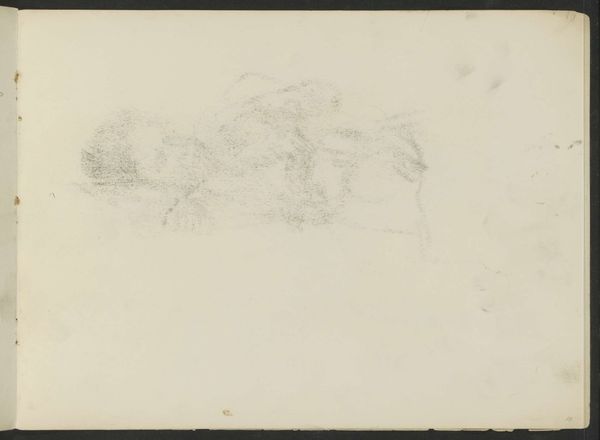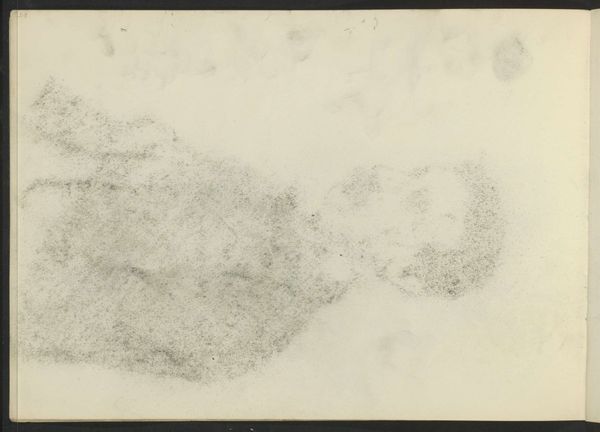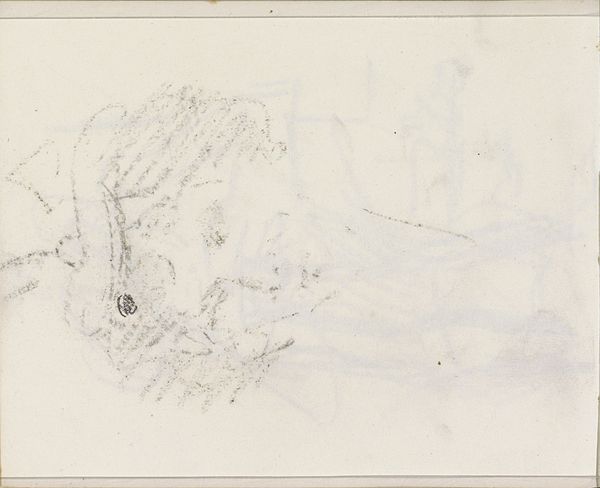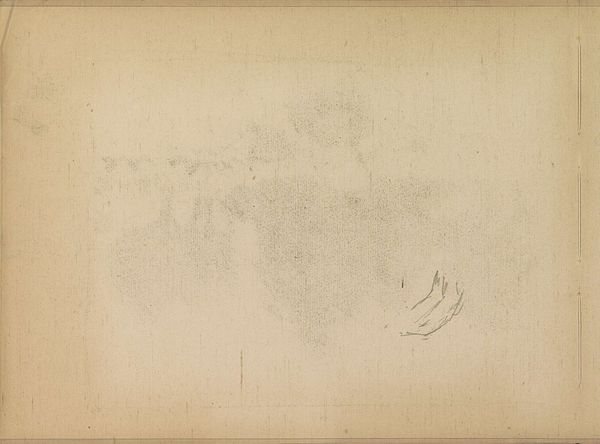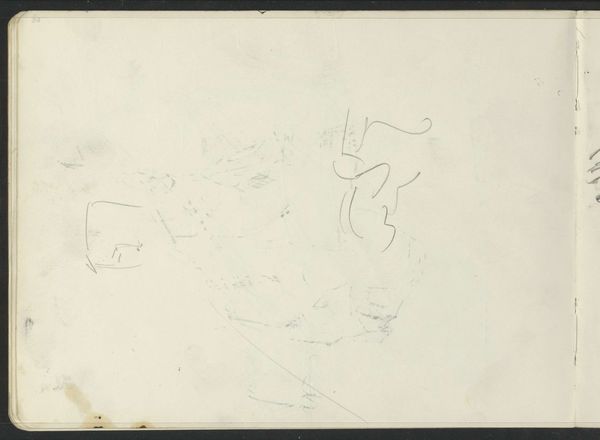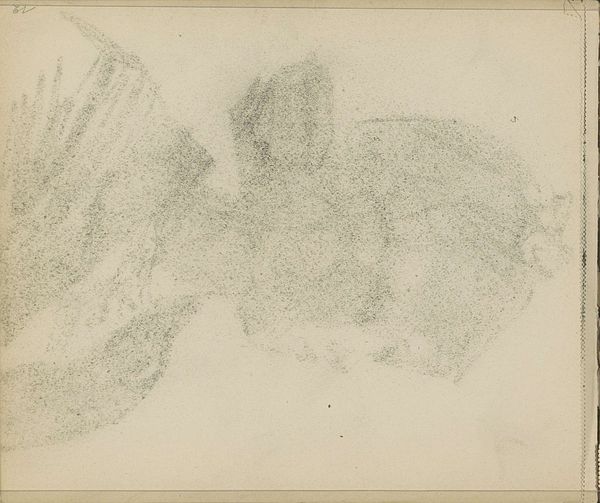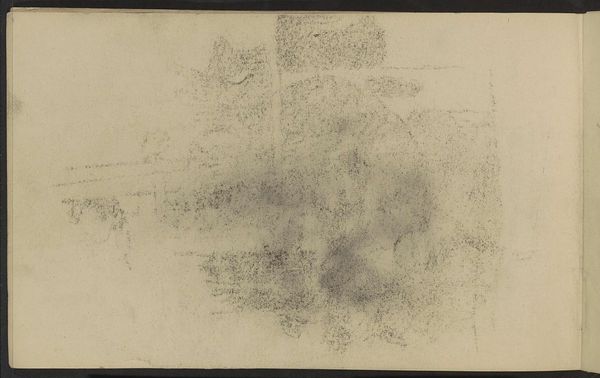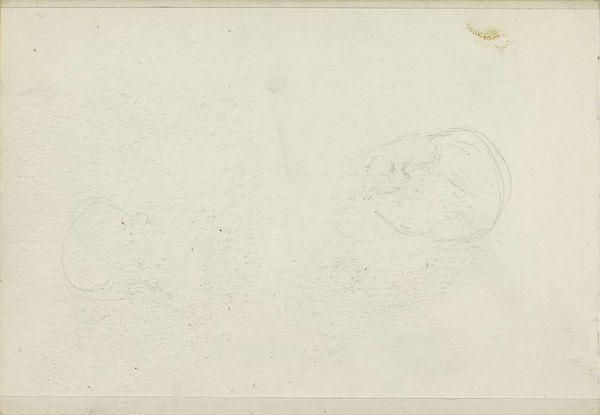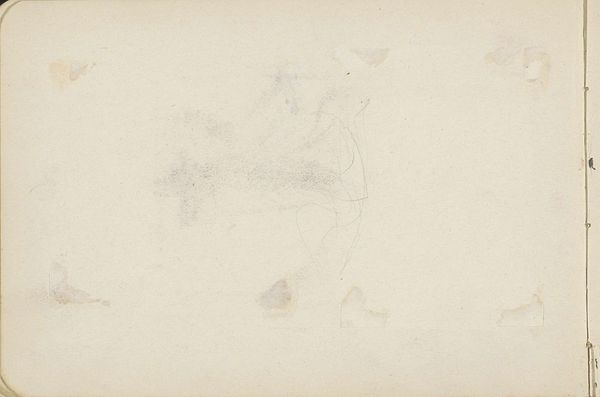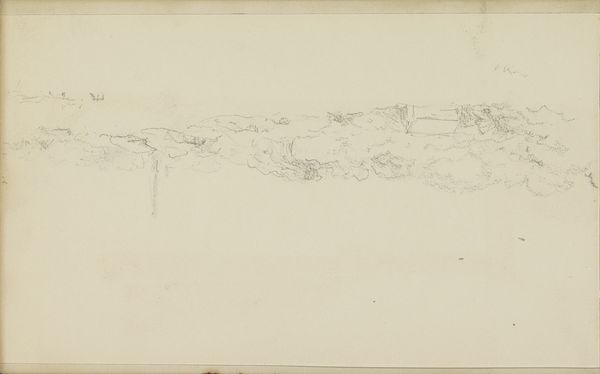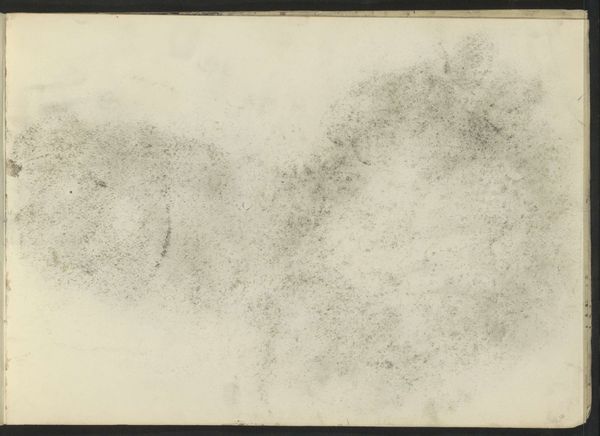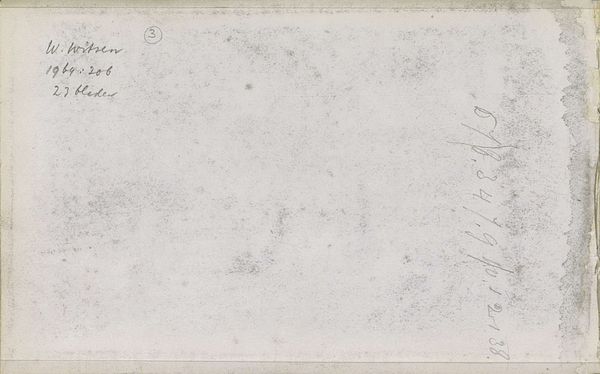
Copyright: Rijks Museum: Open Domain
Curator: Looking at this work, titled "Abklatsch van de krijttekening op blad 5 verso," created by Isaac Israels sometime between 1890 and 1920, what comes to mind? It's a drawing rendered in pencil on paper, currently residing here at the Rijksmuseum. Editor: Immediately, I sense a quiet vulnerability. The faded lines and the 'verso' in the title – hinting at a hidden, secondary image – evoke the tentative nature of marginalised figures whose voices are often overlooked in historical narratives. Curator: That's interesting. Art historically speaking, this sketch represents Israels’ impressionistic explorations, but what I find fascinating is the use of the reverse side, revealing an intimacy rarely seen in finished artworks. This prompts a crucial question: Who were the intended viewers of these more intimate pieces? Editor: Precisely. Israels often depicted everyday scenes and working-class individuals. If we situate this piece within a socio-political frame, could this be a surreptitious glimpse into lives beyond the gaze of the dominant social class? What hidden narratives are etched, not just onto the paper, but also onto the lives of the subjects it depicts? The ghostlike image hints at layers of social visibility and invisibility. Curator: The "Abklatsch," or offset print, technique itself can be interpreted. The process emphasizes immediacy and reproduction but the resulting sketch is indistinct, furthering its enigmatic nature. What does this say about the politics of observation, in an era defined by immense socio-economic disparities? Editor: Absolutely, we must consider Israels' role as a male artist observing, capturing, and ultimately representing others. What power dynamics were at play, and how do those dynamics inform our reading of the image now? The Impressionist style lends itself to fleeting impressions. But what is not captured within these blurred lines is important to analyse. Curator: Well said. This work, despite its understated presentation, encourages an in-depth dialogue. It shows how even the most casual sketch can provide deep insights into social contexts, artistic approaches, and modes of observation. Editor: It highlights how vital it is to go beyond the surface in examining art. This allows us to reveal obscured social histories, which often continue to affect marginalised populations.
Comments
No comments
Be the first to comment and join the conversation on the ultimate creative platform.
